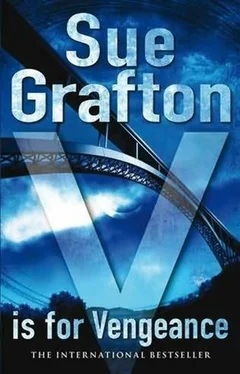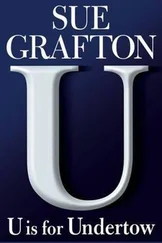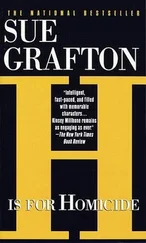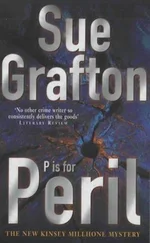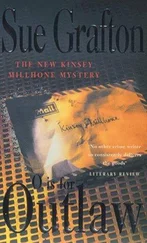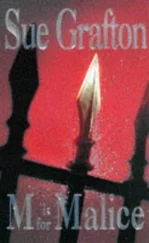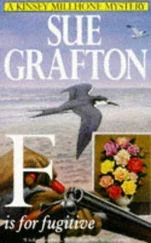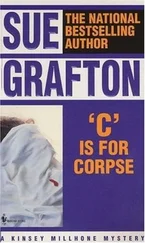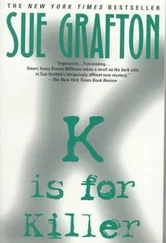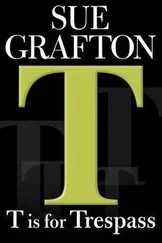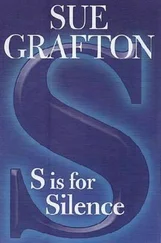I took a seat at my favorite table in the reference room at the public library. I’d plucked the Santa Teresa City Directory from the shelf and I worked my way through, running my finger down the page. In the section I’d turned to, streets were listed alphabetically. For each street, the house numbers were arranged in an orderly progression. Opposite each number, the name and occupation of the householder was given, with the spouse’s name in parentheses. In a separate section, residents were listed in alphabetical order by name, this time including a phone number as well as the address. By flipping from section to section, crisscrossing, so to speak, one could pick up more information than you’d think.
In my notebook, I jotted down the names of the occupants I was interested in, including those of the mock Tudor, the neighbors on either side, and the families across the street. I also looked up the owner of the green stucco house that fronted on Santa Teresa Street at the corner of Juniper Lane. This is what constitutes happiness in my life-the garnering of facts. The younger woman, Audrey’s accomplice, was Georgia Prestwick. I now knew her address and her phone number, which I would probably never have occasion to use. Her husband’s name was Dan. His occupation was “retired.” If I wanted to know what he’d done before retirement, I could track through past city directories until I caught him in the act. From a different source, I knew the Prestwicks had a daughter, who was an honor roll student at Climping Academy.
The owner of the green stucco house was Ned Dornan, whose wife’s name was Jean. He worked for the city planning commission, though the directory didn’t specify in what capacity. I left the library, retrieved my car, and went home. It was 4:30 by then and my day wasn’t even close to being done. I sat down at my desk. My answering machine was blinking merrily. Apparently I had any number of messages and I was guessing all of them were related to the article in the paper. I didn’t have the patience to listen to the blah, blah, blah. I’d be hearing from people I hadn’t spoken to in years and why did I owe them an explanation? I opened my bottom drawer and hauled out the phone book. I paged through until I found the all-purpose number for the City of Santa Teresa. I punched in the number and when the operator picked up, I asked to be connected to the city planning offices. When a woman answered in that department, I asked to speak to Mr. Dornan. She said he was out of the office and wouldn’t be back until Monday, May 2. She offered to redirect my call. I thanked her and declined, saying I’d call again.
I went up the spiral stairs and cleared the top of the footlocker I use as a bedside table, setting the reading lamp, the alarm clock, and a stack of books on the floor. I lifted the lid, took out my 35mm single-lens reflex camera, inserted fresh batteries, and set it aside along with two rolls of film. Then I closed the lid and rearranged the items, pausing to dust the top with a sock I pulled out of the clothes hamper.
I was, I confess, flying by the seat of my pants, but I had reasonable hopes of zeroing in on the woman who’d aided and abetted Audrey’s shoplifting jaunt. There was no way I could risk a face-to-face encounter. While she’d shown no sign of recognizing me when we passed each other in the Nordstrom’s ladies’ lounge, she had most certainly known who I was in the moment when she tried to run me down. If I wanted to find out how she operated, I’d better be prepared to wait.
I went out to the Mustang, a 1970 Grabber Blue speed monster that I’d bought to replace the VW I’d driven for years. I’ll admit the car was a mistake. It was too conspicuous and it netted me the sort of attention ill favored by those in my line of work. I was more than ready to off-load the beast if a decent offer came along. I unlocked the door on the passenger side, opened the glove compartment, and removed my binoculars. I also hauled my briefcase from the backseat and checked to make sure my Heckler & Koch was still present and accounted for, along with an ample supply of ammunition. I didn’t intend to shoot anyone, but I felt more secure knowing the weapon was close at hand. I moved both briefcase and gun to my trunk, which I locked (a wise decision, as it turned out).
I carried the binoculars to Henry’s station wagon and set them on the floor near the driver’s seat. In the backseat, I found the folded windshield screen Henry used to deflect the hot sun during protracted parking stints. Some weeks before, he’d cut holes in the cardboard so I could spy on a nasty customer I’d met on an earlier case. I put the cardboard screen on the floor on the passenger side.
Back in my studio, I sat down at my desk again and punched in the phone number for the green stucco house. The phone rang five times and then the machine picked up. A mechanical voice said, “No one is here to receive your call. Please try again at a later time. Thank you.” Ned and Jean were apparently on vacation.
Humming, I made myself a peanut butter and pickle sandwich, which I cut on the diagonal, wrapped in waxed paper, and placed in a brown paper bag. I took a wash rag from the linen closet, wet it, and squeezed most of the moisture out, tucking it into a Ziploc storage bag that I placed in my shoulder bag. This was so I could tidy up after I ate. I’m ever so dainty when I’m out in the field. I was thrilled to discover that the Fritos I’d tucked in there earlier were more or less intact. I filled a thermos with hot coffee and set that beside my brown bag lunch. I found my clipboard and tucked a legal pad under the clip. Then I added two paperbacks, my denim jacket, my camera and film, a baseball cap, and a dark long-sleeve shirt to the pile. This was as much trouble as leaving town for a week.
I made a pit stop, knowing it might be hours before I’d have another opportunity. On the way back to Juniper Lane, I stopped at the market and picked up a bag of Pepperidge Farm cookies, Milanos being essential for surveillance work. Without them, I’d just end up feeling sorry for myself.
I parked on Santa Teresa Street, donned my baseball cap, locked the car, and did a quick survey of the neighborhood. I walked the long block northwest along Santa Teresa until it dead-ended into Orchard Road. Around that corner and two blocks to the left, Orchard intersected State Street. Where I stood, the street made a sweeping bend to the right, hugging the walled boundaries of a convent. By following the curve on foot, I reached the far end of Juniper Lane. I was looking for a spot that would allow me to keep the Tudor in my visual field without generating curiosity about my presence. The same strictures applied here as they had in Horton Ravine. Anyone sitting in a parked car for more than a few minutes generates uncomfortable questions. I walked along Juniper Lane, paying particular attention to the parking area provided by the absentee owner of the green stucco house. To the left of the garage, he’d carved out a space wide enough to accommodate a pickup truck or a recreational vehicle, neither of which were there. Instead, I was looking at a U of chicken-wire fence laden with morning glory vines.
I returned to my car, fired it up, and took a right on Santa Teresa Street, which I followed as far as Juniper Lane, turning right as I had a short time earlier. The question I asked myself was this: what would happen if I backed into this perfect spot and the owner returned? It seemed unlikely. As nearly as I could ascertain, the Dornans were out of town. He wasn’t due at work until Monday, which didn’t rule out the possibility that he’d show up early in order to enjoy a weekend at home. If so, how would I explain myself?
Читать дальше
